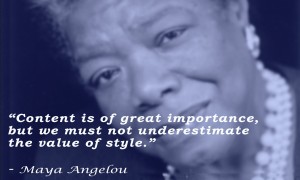Are you reaching your audience on social media the right way? Columnist Jordan Kasteler takes a look at 8 brands you can take a page from.
 Many businesses set up shop on Facebook, Twitter, Instagram and other social networks in pursuit of new customers. Of course, the strategies they use to attract those customers differ, and some rise above the rest.
Many businesses set up shop on Facebook, Twitter, Instagram and other social networks in pursuit of new customers. Of course, the strategies they use to attract those customers differ, and some rise above the rest.
Here are eight companies that are doing social media right, examples of their campaigns along with some takeaways that you can apply to your own marketing efforts.
1. Cisco
When you think of companies that market on social media, chances are Cisco Systems isn’t the type of business you’d think of first. Business-to-consumer companies tend to take the lead in the social media marketing arena. But Cisco’s social media campaign has been a pleasant surprise.
The theme: There’s Never Been a Better Time.
In a world filled with uncertainty around the election, this campaign is focused on generating a more positive outlook for the future. Cisco did this by inviting their customers to join in the conversation about how to make the world a better place.
The stories Cisco highlighted made their technology more tangible. It made large IT infrastructure more relevant to the everyday lives of their target market.
This type of campaign worked well on social media because it was compelling and fit in nicely with the context of what their audience wanted to see in their news feeds.
2. Staples
Paper clips and notebooks aren’t the most compelling products to chat about on social media, but Staples has turned the boring into fun with its strategy.
They’ve incorporated the mundane into entertaining messages. Take a look at a few examples:



The copy is succinct. The imagery is entertaining. It’s a strong way to poke a little fun at the office atmosphere and sell a product at the same time.
3. Pampers
Nothing is quite as adorable and coo-worthy as babies, so you might think that Pampers has it pretty easy when it comes to marketing on social media. However, their particular product (diapers) is less than glamorous for the families that use them.
So, Pampers has chosen to ignore the fact that diaper changes are the least anticipated moment of being a parent. They instead focus on the part that is compelling: the undeniable emotion and love behind holding and caring for your newborn.
In their social media campaigns, they focus on bringing out the special bond between a parent and a child. This bond tugs at heartstrings much harder than any poop joke or diaper feature ever could. They contribute emotional appeal to the social media world instead of adding to the noise with overtly sales-y messages.
4. Poo-Pourri
Some products lend themselves to humor. Poo-Pourri is one of them.
Poo-Pourri is a spray that you can use before you go to the bathroom to limit the smell that comes from the toilet. Yes, it’s a serious product, and yes, they’ve mastered the art of using humor on social media to bring awareness to their business.
One campaign in particular is called, “Girls don’t poop.” It’s aimed at a female audience that especially wants to hide any unwelcome odors left behind when they leave the bathroom. To do this, they use a proper-looking woman named Bethany. Bethany creates videos that address all of the taboo sides of using the bathroom in an effort to resonate with women who want to maintain their proper image.
It’s funny. It’s engaging. And, it’s proven to be quite popular, with over 20 million products sold using primarily social media as an advertising platform.
5. Innocent
The goal of smoothie maker Innocent’s social media marketing is to become a place where people want to visit and have posts people enjoy seeing in their timelines. Their method: Start conversations.
They’ve uncovered a couple of ways to do this that work well for their brand:
• They speak like humans without using jargon or buzzwords to sell their product.
• They join the conversations already happening by reacting to events.
The last one can be tricky, as many people see that as “brand-jacking” (or hijacking news stories with the goal of branding your business). Although that’s true, Innocent does it in a way that feels fun and not overly promotional. And they’re careful not to cross any boundaries or jump into an event with too much chatter. It’s a fine line that they walk well.
For example, when the clocks rolled back an hour, Innocent was on top of their game with a tweet that sparked a lot of attention:

And they did it again with Halloween:

But they don’t neglect their brand. They’re constantly sprinkling in tweets with human-sounding copy that pokes fun at marketing alongside images of their product. Here’s an example:

Innocent is consistently fun in its social media campaigns, which helps them to consistently engage their fans. And isn’t that the end goal of social media?
6. JetBlue
When you think of advertising, you probably think of pushy sales messages, right? JetBlue aimed to turn that idea on its head by changing the way they use social media.
Instead of focusing on fare discounts or pushing promotional offers on Twitter, the airline uses their handle to focus on customer service. Take a look at their Twitter feed, and you’ll notice that most of the posts include @ replies. This has helped the brand build a stronger reputation among its consumers, making them more appealing.
@ajaybhagwatboss Hi Ajay! Nice to meet you here on twitter and we hope to see you in December!
— JetBlue Airways (@JetBlue) November 16, 2016
7. Uber
“I’m going to Uber it home tonight,” is a common phrase uttered by college students, professionals and club-goers. This phrase isn’t one the company coined. It came about because of social media.

Approximately 84 percent of customers make purchase decisions based on their friends’ recommendations. Uber harnessed that power of using word-of-mouth marketing by offering incentives to riders in exchange for a social media share.
Riders were sharing their Uber codes on social media as a way to get free rides home. The end result? “Uber” became a verb instead of a noun with minimal investment in advertising.
8. Toys “R” Us
The Toys “R” Us brand is all about letting kids have fun, so it makes sense that their advertising would center around that same concept. In 2015, Toys “R” Us employed the latest technology, augmented reality, to help them make their stores even more enticing for families.
The augmented reality marketing campaign took kids around the stores on a virtual egg hunt. Each time a kid found an egg on the ground, he or she would take a picture of it in the Toys “R” Us app and then be given a clue.
At the end, the kids were able to take a video with Geoffrey, the Toys “R” Us mascot, that they could then share with their friends on social media. Sharers were encouraged to use #TRUMagic with their videos.
This campaign wasn’t just fun; it was also engaging. Kids were able to go through a few fun clues to eventually get their video with the well-known Geoffrey. The more kids did this and shared it with their friends, the more people headed to the stores to get their own videos.
The lessons learned
There are many lessons to learn from these social media campaigns.
- Change the tone of the conversation to be positive and uplifting (like Cisco).
- Turn boring into entertaining (like Staples).
- Tap into the emotions of your audience (like Pampers).
- Don’t shy away from taboo subjects that relate to your brand (like PooPouri).
- Be human and entertaining (like Innocent).
- Use social media to engage with customers instead of sell (like JetBlue).
- Spark word-of-mouth marketing by giving out incentives for talking about your brand (like Uber).
- Use augmented reality to attract people to your store (like Toys “R” Us).
The point is to be interesting. Social isn’t a platform for you to push your sales messages. It’s a platform for you to engage. The more you can do this, the more you’ll attract a following and start to see the ROI of your campaigns. Then follow up with collecting emails for drip campaigns, marketing automation and retargeting to push sales.
Some opinions expressed in this article may be those of a guest author and not necessarily Marketing Land. Staff authors are listed here.
Marketing Land – Internet Marketing News, Strategies & Tips
(26)
Report Post







